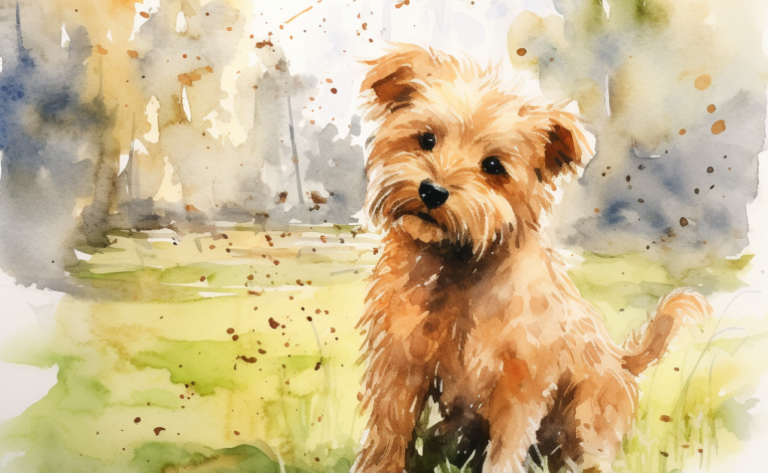What is Melanoma in Cats?
What is it?
How is it Treated?
Breed Predispositions
There are no known breeds that are predisposed to melanoma in cats. However, age, gender, and immune status may increase the risk of developing melanoma.
Introduction
Nina had always been an attentive cat owner, keeping a watchful eye on her beloved feline friend, Misty. But when she noticed a dark, pigmented mass on Misty’s ear, she couldn’t help but feel a sense of unease. Deciding to err on the side of caution, Nina took Misty to the veterinarian for a thorough examination. To Nina’s dismay, the veterinarian diagnosed Misty with melanoma, a form of skin cancer that can affect both humans and animals. Overwhelmed by the diagnosis, Nina knew she had to learn more about melanoma in cats in order to provide the best care possible for Misty.
Melanoma in cats is a type of cancer originating from melanocytes, cells responsible for producing the pigment melanin. Melanoma can occur in various locations, including the skin, oral cavity, and eyes. It arises due to certain mechanisms within the body that lead to the uncontrolled growth and proliferation of abnormal melanocytes. Melanoma can present as pigmented or non-pigmented tumors, and its occurrence involves disrupting normal cell growth and division processes. Understanding the occurrence of melanoma helps recognize the condition and seek appropriate veterinary care promptly.
Types of Melanoma in Cats
Melanoma, a form of skin cancer originating from the melanocytes, or pigment-producing cells, can present itself in multiple forms in cats. Despite being relatively rare in cats compared to dogs and humans, when melanoma develops, it often displays an aggressive nature, especially in oral melanoma. Melanomas can emerge in various locations, including the skin, mouth (oral melanoma), and eyes (ocular melanoma). These melanomas can behave as benign or malignant, depending on their nature.
Benign Melanoma (Melanocytoma)
Melanocytomas, or benign melanomas, are typically less aggressive and tend to stay confined without metastasizing to other body regions. These tumors generally grow at a slow pace and can often be completely eradicated through surgical intervention. The two primary types of benign melanoma, based on their location, are:
- Cutaneous Melanocytoma: This type of melanoma appears on the skin as a solitary, distinct, black or dark brown tumor.
- Ocular Melanocytoma: This form of melanoma, including limbal and uveal melanoma, emerges in the eye, possibly leading to color alterations in the iris or pupil.

Malignant Melanoma
Malignant melanomas display a more aggressive behavior and carry the potential to spread to other parts of the body, such as the lungs and lymph nodes. These forms of melanoma are usually more invasive and carry a less favorable prognosis than benign melanomas. They are also categorized according to their location:
- Cutaneous Malignant Melanoma: This skin melanoma can manifest as a quickly expanding black mass, potentially ulcerating and bleeding.
- Oral Malignant Melanoma: These oral melanomas are generally aggressive, frequently spreading to the bone and can lead to difficulties eating, drooling, and halitosis.
- Ocular Malignant Melanoma: These eye melanomas may impair vision or cause complete blindness, making the eye appear swollen or bloody.
- Digital Malignant Melanoma: These melanomas occur on cats’ digits (toes), often associated with discomfort and inflammation.
It’s critical to understand that although cats may have skin cancer like melanoma, it’s less prevalent. If you notice any abnormal growths or changes in your cat, consulting a veterinarian for a thorough examination is always recommended.
Stages of Melanoma
The melanoma stage offers information about the cancer’s degree of spread. Veterinary oncologists utilize the TNM (Tumor, Node, Metastasis) system to stage melanomas. Here’s a simplified explanation:
- Stage I: The tumor is small and localized, with no metastasis to lymph nodes or distant sites.
- Stage II: The tumor is larger or has invaded deeper skin layers, but no lymph nodes or distant sites are affected.
- Stage III: The cancer has metastasized to the nearest lymph node but hasn’t spread to other body parts.
- Stage IV: The cancer has metastasized to distant sites, such as the lungs or other organs.
The melanoma stage at diagnosis can aid in determining the prognosis and guiding treatment decisions. Cats diagnosed with early-stage melanomas generally have a more favorable prognosis than those with advanced-stage melanomas. However, the prognosis for malignant melanoma in cats, especially oral melanoma, is often poor due to these tumors’ aggressive nature.
Causes of Melanoma in Cats
The precise cause of melanoma, a highly malignant cat skin cancer, remains elusive. However, it is believed to arise due to genetic and environmental influences. Below are some insights into potential causes and risk factors:
Genetic Influences
Genetic factors likely predispose certain cats to melanoma, similar to humans. Such genetic predispositions can trigger cells to mutate and increase uncontrollably, eventually forming tumors.
Sun Exposure
Like humans, exposure to sunlight is a recognized risk factor for skin melanoma in various species. Cats, particularly those with light-colored or white fur and those spending a significant amount of time outdoors, are more prone to sun-induced skin damage and potentially higher risks of developing skin melanomas. However, the correlation between sun exposure and melanoma in cats is less explicit than in humans, especially considering that the leading cause of skin cancer in cats is often oral melanoma, unaffected by sunlight exposure.
Persistent Inflammation or Irritation
Chronic inflammation or irritation in the oral region might contribute to developing oral melanoma in cats. Such irritation could stem from dental disease, tobacco smoke exposure, or other chronic oral conditions.
Age
Melanoma tends to occur more frequently in older cats, as the risk for most cancers amplifies with age.
Viral Infections
Preliminary studies have suggested a potential association between specific viral infections and an elevated risk of melanoma. However, these findings warrant further investigation for confirmation.
Due to the possible genetic elements, preventing melanoma in cats can be a complex task. Nonetheless, measures such as minimizing sun exposure, promoting good oral health, and scheduling routine veterinary check-ups for early detection of changes can be helpful. Skin and intraocular tumors are visible signs your cat might have skin cancer. If you observe any alterations in your cat’s skin, mouth, eyes, or overall behavior, immediate consultation with a vet is crucial.
Symptoms of Melanoma in Cats
The clinical signs of melanoma in cats can fluctuate based on the cancer’s location and severity. Some of the symptoms that may be indicative of this condition include:
- The presence of unusual growths or lumps on the skin or within the mouth
- Modifications in color, size, or shape of pre-existing moles
- Persistent ulcers or sores that fail to heal
- Challenges while eating or reduced appetite
- Excessive salivation or unpleasant breath, particularly in the case of oral melanomas
- Bleeding or discharge from the nose or oral cavity
- Facial or ocular swelling, often associated with conditions such as feline diffuse iris melanoma or uveal melanoma
- Decreased activity or lethargy
- Unexplained weight reduction
- Difficulty breathing, a symptom of skin cancer potentially indicating that the melanoma has impacted the respiratory system, particularly the lungs
It’s important to note that these clinical signs do not strictly indicate melanoma and could point to various health concerns, including conditions affecting the ciliary body in the eye. A vet consultation is imperative to ascertain the root cause if your cat demonstrates these signs.
Diagnosing Melanoma in Cats
Determining a diagnosis of melanoma in felines necessitates a variety of steps. Clinical evaluation, diagnostic tests, and imaging studies might be employed to verify melanoma’s presence and gauge its progression. Here are some key processes that could play a part:
Physical Assessment
A meticulous physical evaluation forms the first step in diagnosing a cat with melanoma. The vet will look for indicators of a malignant tumor, such as a growth on the cat’s skin or mouth while evaluating the cat’s overall health. If growth is identified, the vet will scrutinize it for signs of malignancy, like alterations in color, shape, size, or ulceration.
Fine Needle Aspiration or Tissue Sampling
The vet might execute a fine needle aspiration (FNA) or a biopsy in dubious growth. During an FNA, cells are extracted from the growth with a slim needle, followed by a microscopic examination. This process often yields useful information regarding the type and possible malignancy of the cells.
A larger tissue sample is obtained for a biopsy by cutting a small part of the growth (incisional biopsy) or the entire growth (excisional biopsy). This sample is then sent to a lab where a pathologist can conduct a comprehensive examination, providing a definitive diagnosis of melanoma.
Imaging Procedures
Imaging procedures like X-rays, abdominal ultrasounds, or CT scans may be employed to assess the extent of the tumor and search for indications of metastatic disease, i.e., cancer spread to other areas. For instance, chest X-rays can disclose if cancer has spread to the lungs, while an abdominal ultrasound can shed light on the health status of the liver and other organs.
Blood Analysis
Blood tests can offer insights into the cat’s overall health, assisting the veterinarian in evaluating the cat’s capacity to handle potential treatments. Some blood tests can also shed light on the body’s response to neoplastic cells or tumors.
Disease Staging
If a diagnosis of melanoma is confirmed, additional tests may be necessary to ascertain the stage of the disease, indicating the extent of cancer spread. This might involve further imaging studies, evaluation of the lymph nodes, and possibly other tests. The stage of cancer significantly impacts the prognosis and the plan for diagnosis and treatment.
While these processes can yield a wealth of information, it’s crucial to remember that each cat is unique, and not all cats will require all these tests. The vet will suggest the most appropriate tests based on the cat’s symptoms, the physical examination, and the initial test results.
Please remember that potential signs of developing skin cancer in cats, like growths on the skin or secondary glaucoma, should not be ignored. Always consult a vet if you notice any changes in your pet’s health.
Treatment Options for Cats with Melanoma

The treatment of melanoma in cats, whether benign or malignant, primarily depends on the body part where it develops, the extent of tumor spread, and the cat’s overall health.
Benign Melanoma
Benign melanomas, or melanocytomas, are often less aggressive and may be completely removed through surgical removal. Sometimes, no treatment is necessary if the tumor does not interfere with the cat’s quality of life and slow growth rate.
Malignant Melanoma
Malignant melanomas are usually more aggressive and can spread to other body parts. These forms of cancer present a more significant challenge, and treatment options include:
- Surgery
Surgical tumor removal is often the first-line treatment for localized malignant melanomas. For instance, oral tumors may require the removal of part of the jaw. The extent of surgery depends on the location and size of the tumor.
- Radiation Therapy
Radiation therapy is often used when the melanoma is situated in a challenging location, such as inside the eye, or if the cancer persists even after surgical removal. It can help control the growth of the tumor and alleviate symptoms, but it usually doesn’t cure the cancer.
- Chemotherapy
If cats develop melanoma that has metastasized or spread to other parts of the body, chemotherapy or radiation may be considered. It may also be used in conjunction with surgery and radiation therapy. However, the response of feline melanoma to this form of cancer treatment is variable.
- Immunotherapy
Immunotherapy, which involves stimulating the cat’s immune system to fight cancer, is an emerging field in veterinary oncology. While not yet widely available, initial studies show promise for treating malignant forms of cancer, potentially including melanoma.
- Palliative Care
For cats with advanced-stage melanoma or those not candidates for other treatments, palliative care can help manage symptoms and improve quality of life. This might include pain management, nutritional support, and other supportive measures.
Regardless of the treatment, follow-up care is crucial in managing melanoma in cats. This may include regular physical examinations and monitoring for signs of recurrence or metastasis in the case of malignant melanoma.
As always, the most appropriate treatment plan for a cat with melanoma should be determined in collaboration with a veterinarian or a veterinary oncologist. The cat’s overall health, age, and the potential benefits and risks of each treatment option should be considered.
How to Prevent Feline Melanoma?
While thwarting the development of melanoma in felines can be an arduous task, owing to the multitude of potential causes and contributing factors, there are several strategies that owners can employ to mitigate the risk:
Sun Exposure Management
Even though the association between sun exposure and feline melanoma isn’t as straightforward as in humans, limiting your cat’s exposure to the sun is still beneficial, especially during peak hours. This becomes particularly crucial for light-furred or hairless cats, who might be more prone to sun damage. Offering shaded spaces outdoors and applying sun-blocking films to windows indoors can be helpful.
Routine Vet Consultations
Frequent vet check-ups can facilitate the early detection of melanoma and other cancers when most susceptible to treatment. Your vet can perform comprehensive physical examinations and suggest any appropriate diagnostic tests.
Oral Hygiene
Considering the prevalence of oral melanoma in felines, preserving your cat’s oral health might aid in preventing this disease. Regular teeth brushing, dental diets, and professional dental cleanings can all promote a healthy mouth environment.
Tobacco Smoke Avoidance
Cats exposed to tobacco smoke are at a heightened risk of developing oral cancers, likely due to the carcinogens that settle on their fur and are ingested during grooming. If you smoke, consider quitting or ensuring your cat is not exposed to secondhand smoke.
Healthy Lifestyle
Although there’s no direct link between diet, exercise, and feline melanoma, a healthy lifestyle can bolster overall well-being and a robust immune system. The latter can aid the body in warding off cancerous transformations, particularly invasive melanomas.
Changes Surveillance
Maintain vigilance over your cat’s body and behavior. If you notice any changes, such as new growths, alterations in eating or grooming habits, or anything unusual in your cat’s eye, seek a vet’s advice immediately.
While these strategies can’t assure that your cat won’t develop melanoma – as melanomas are tumors appearing in various body areas, including the skin, mouth, and eyes – they can contribute to a healthier life. If caught early, considering the prognosis, the earlier detection and treatment of melanoma can potentially save your cat’s life.
Research on a melanoma vaccine for cats is currently underway and may provide another avenue to protect your cat from this type of cat skin cancer in the future.
Frequently Asked Questions
Disclaimer: The information provided on this veterinary website is intended for general educational purposes only and should not be considered as a substitute for professional veterinary advice, diagnosis, or treatment. Always consult a licensed veterinarian for any concerns or questions regarding the health and well-being of your pet. This website does not claim to cover every possible situation or provide exhaustive knowledge on the subjects presented. The owners and contributors of this website are not responsible for any harm or loss that may result from the use or misuse of the information provided herein.







